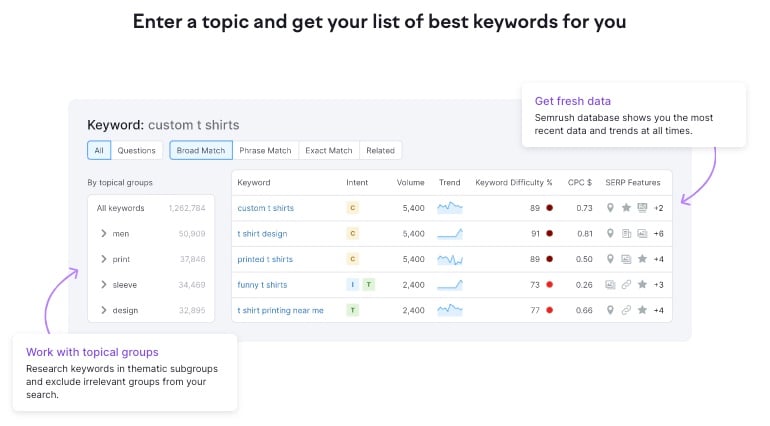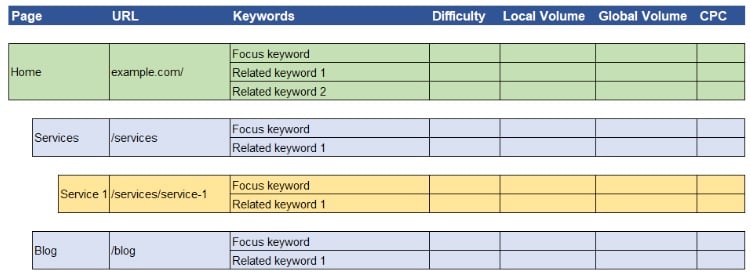Discovering keywords for localized SEO success
Multilingual website content won’t achieve results with literal translation – and SEO is no different. Keywords are essential for bringing visitors to your web pages and must be tailored to their search habits. Here are 4 steps to choose keywords that increase global traffic.
What is SEO localization?
SEO localization involves adapting website content for searches. Localizing your SEO, or search engine optimization, allows you to target multiple languages and countries.
While many Internet users use Google, search engines like Baidu or Yandex are more widely used in other markets. However, having good rankings on one search engine doesn’t guarantee that your website will rank similarly – or even be indexed – on another.
Keyword research is essential to reach the top of search engine results pages (SERPs). It identifies how to optimize your content and other SEO elements, such as URLs and metadata, for success.
We’ll go over 4 steps to select the best keywords for your multilingual website.
1. Research each market
Foreign language SEO must involve localization between locales. Content in your chosen languages should contain vocabulary and information specific to the target country. Literal translation fails to respond to the search intent of locals and misses out on opportunities to establish yourself as a trusted brand.
Linguistic variations must also be considered. For example, search engine optimization in Spanish varies greatly across Spain and Latin America. Not conducting research for a single market or opting for “neutral” Spanish can impact your success.
Examining users’ search habits in their language and locale helps shape your content to offer precisely what they’re looking for. Here are some questions to consider:
- Which search engine is used in this country?
- How do your products or services fit in the market?
- What kind of messaging is effective and what should be avoided?
- Are there any local regulations to take into account?
Working with SEO specialists for each market with cultural expertise and knowledge of the latest best practices leads to greater success.
2. Find ideas from native-language content
Reaching the right audiences is only possible once you target suitable keywords to drive traffic to your website. To determine what's important for each market, look for relevant topics and phrasing in the target language. Some examples include:
Sector-specific content
Extensively researching websites and publications in your field can provide insight into the terms that will make all the difference. This is especially true for technical terminology. For instance, if you wanted to write about agricultural equipment, you might find articles with ‘refrigeration’ or ‘cooling’. Include interchangeable terms in your list.
User forums
Potential customers’ discussions help identify worthy topics and frequently asked questions.
Competitor websites
Your competition can reveal keywords you haven’t considered and, more importantly, how you can offer a better customer experience.
You should now have topics and potential keywords in the target language. However, multilingual SEO isn’t just about inserting these keywords into your content. It’s crucial to understand the user’s intent when they use them in search queries.
Look up each keyword in the target audience’s search engine (remember to change the language and country). The results should be related to the page you want to rank for and present an opportunity for conversion. Searches related to your topic (at the bottom of the page) and autocomplete functions as you type in a query will also offer more suggestions to explore.
To sum up, suitable keywords should help users find what they're looking for and deliver results for your business.
Now that you have a list of keyword ideas, it’s time to see how competitive they are and allocate them to the most appropriate pages.
3. Build a keyword map
Analyzing and narrowing your keywords down with quantitative data is a vital part of your SEO localization strategy. Prioritize this stage to choose the most valuable keywords that will reach new global visitors.
Use a tool such as Ahrefs Keywords Explorer or Semrush Keyword Research Tool to find the monthly search volume, difficulty and cost per click (CPC) of your potential keywords.

Your chosen keywords will come down to the competition in the target market and your website’s authority. You may want to first aim for easier keywords and introduce more competitive ones as your website increases its ranking. Include long-tail keywords with 3–5 words or questions to meet the search intent and resolve clear pain points with each piece of content.
Sort relevant search terms into a keyword map. There are many ways to create one, but the most common is a spreadsheet allocating primary and secondary keywords to each URL.

Keyword mapping gives your website a logical site structure for search engines to crawl through and visitors to navigate. This visual representation of your website ensures that each page serves a purpose. It prevents duplication and can also reveal internal linking opportunities to improve your site's overall authority. Plus, it’s easier to create the content your customers are looking for.
Tip: Use your keyword map to draft briefs for your localization team, translators and copywriters.
4. Keep an eye on performance
Once you’ve localized your website, be sure to review your keyword map and progress in all markets regularly. After all, search trends are constantly evolving in the ever-changing SEO landscape. A review highlights what’s working and areas to focus on. Schedule one every quarter or 4–6 months before a campaign.
Investing in SEO localization and finding opportunities with locally relevant keywords is a cost-effective way for your multilingual website to drive growth.
Need some help? Partner with SEO localization experts
Finding the right keywords can be tricky with more than one language and culture involved. With Attached, you don’t have to worry about the complexity of moving into new markets. Choose from a variety of solutions to win organic traffic with a compelling website in any language.
Speak to us for an SEO site audit or explore more tips for your multilingual website.






